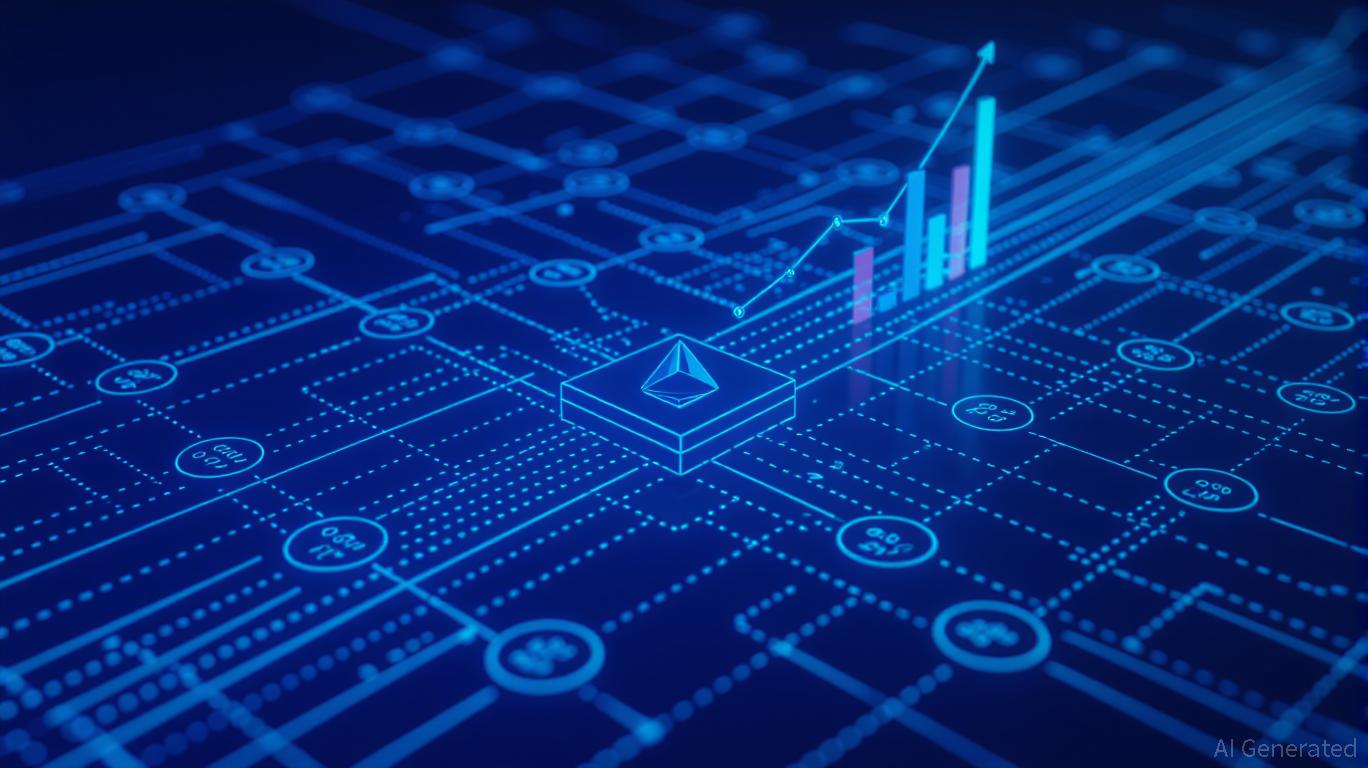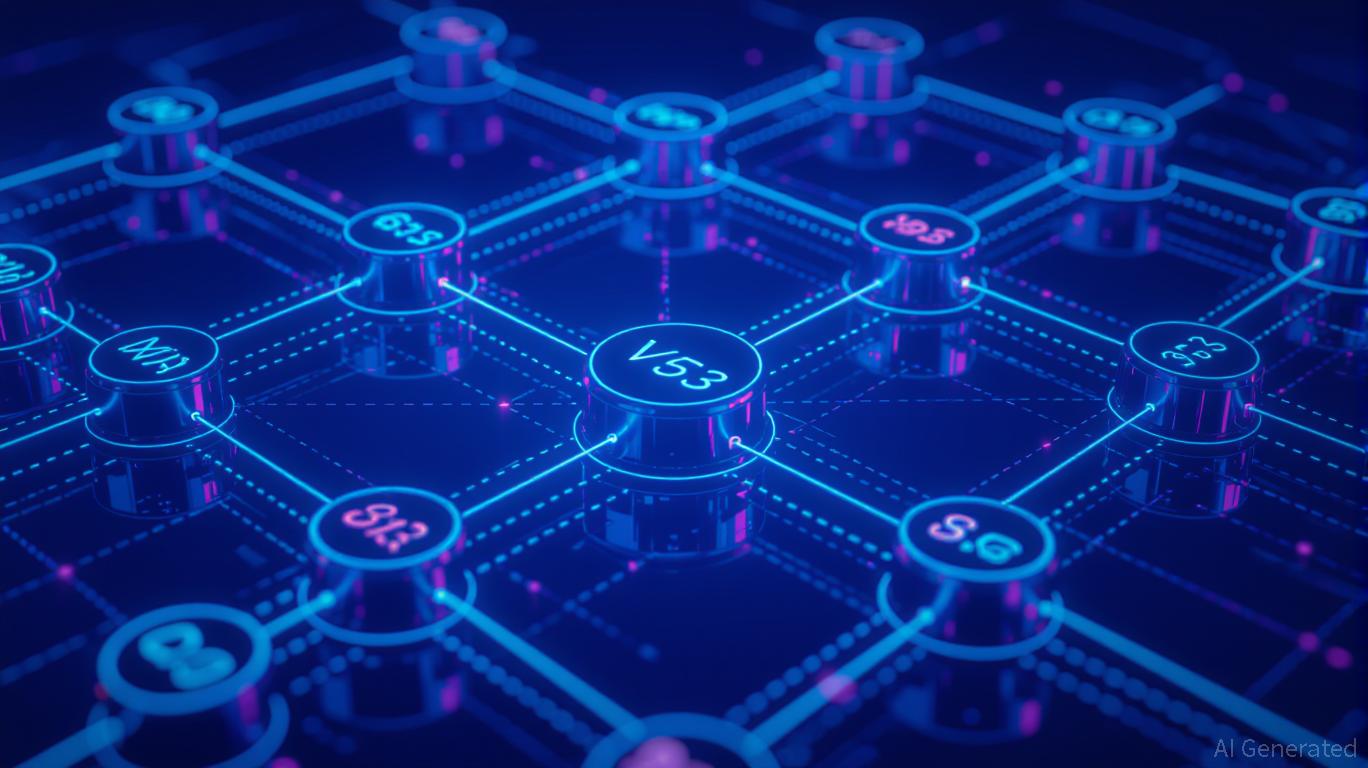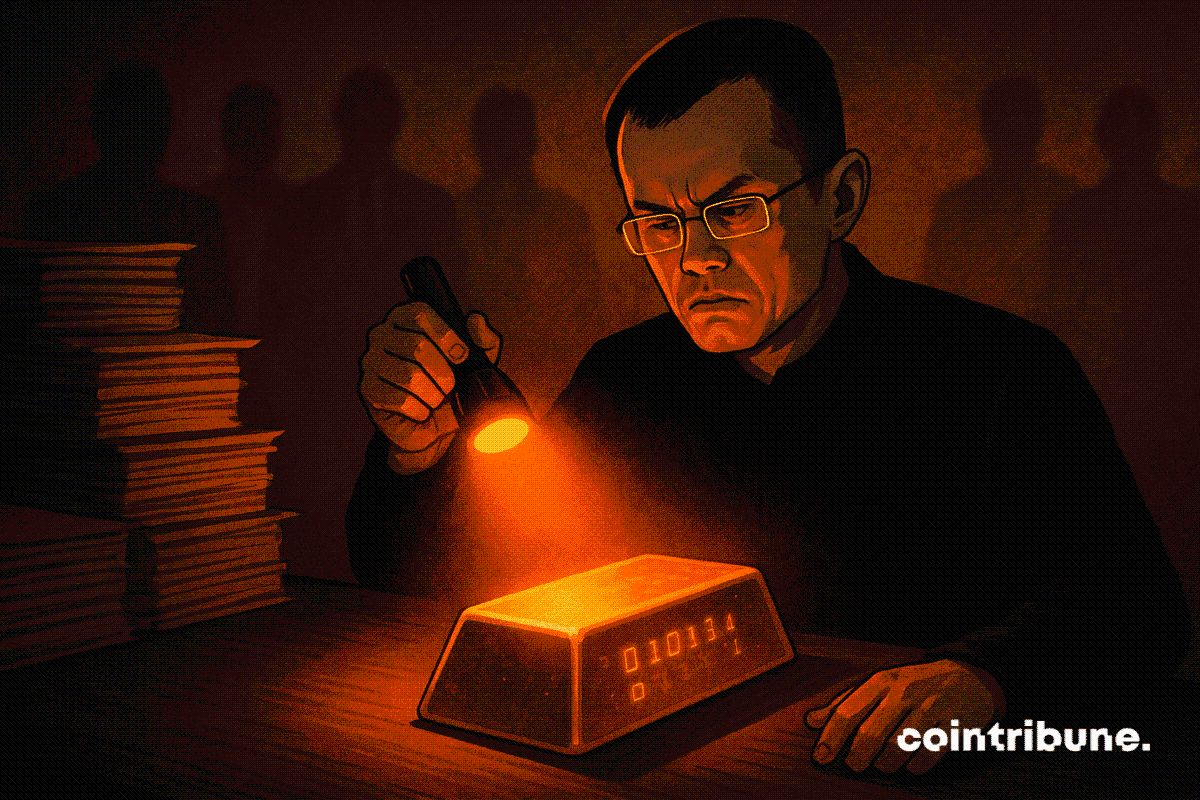ZK Atlas Enhancement: Driving Blockchain Expansion and Attracting Institutional Investments
- ZKsync's Atlas Upgrade (Oct 8, 2025) breaks scalability barriers with 15,000+ TPS, near-zero fees, and ZK proofs enhancing Ethereum's Layer 2 performance. - Innovations like Airbender proof system (40% lower overhead) and multi-VM compatibility enable seamless DeFi interoperability, attracting institutional capital seeking secure, scalable infrastructure. - Post-upgrade ZK token surged 50%, reflecting investor confidence, while partnerships like Grvt's $19M funding signal active institutional adoption of
Technical Advancements: The Architecture of Scalability
The Atlas Upgrade brings two major innovations: a high-speed sequencer and the Airbender proof system. The sequencer, tailored for intensive workloads, achieves over 30,000 TPS in testing, while Airbender—a proof system based on RISC-V—cuts computational costs by 40% compared to earlier ZK-rollup models, according to a
Additionally, the upgrade’s support for multiple virtual machines (multi-VM) and full Ethereum Virtual Machine (EVM) compatibility ensures smooth interaction between Layer 1 and Layer 2. This removes the necessity for separate liquidity centers, enabling Layer 2 solutions to tap directly into Ethereum’s liquidity, as noted in the

Implications for DeFi: Security, Privacy, and Institutional Trust
The DeFi landscape has come under increased scrutiny after major security breaches, such as the $116 million Balancer and $93 million Stream Finance incidents. These cases highlighted the vulnerabilities of smart contracts and the urgent need for stronger security measures. ZK-based solutions inherently address these issues by using cryptographic proofs to confirm transactions without revealing private information, as mentioned in the
Such safeguards are crucial for institutional adoption. The Ethereum Protocol Advocacy Alliance (EPAA) emphasizes that decentralized governance and non-custodial systems are key to earning institutional trust, as reported in the
Investment Readiness: Capital Inflows and Market Response
The market has already responded positively. After the Atlas Upgrade was announced, ZKsync’s native token (ZK) jumped by about 50%, reflecting strong investor belief in its future potential, as covered in the
The upgrade’s effect on capital efficiency is also notable. With L2-to-L2 interoperability achieved in less than a second, ZKsync removes much of the friction involved in cross-chain transactions—a major obstacle for institutional portfolios spanning multiple protocols. Furthermore, the capability to settle real-world assets (RWAs) on Ethereum’s Layer 2 without compromising liquidity paves the way for asset tokenization, a market expected to reach $16 trillion by 2030, according to a
Conclusion: A New Era for ZK-Based Ecosystems
The ZK Atlas Upgrade is not just a technical update; it marks a fundamental change in how blockchain networks address scalability, security, and institutional needs. For investors, the message is clear: ZK-powered protocols are now ready to attract substantial capital, thanks to their ability to satisfy the evolving requirements of DeFi. As Ethereum co-founder Vitalik Buterin remarked, this upgrade represents “a meaningful step toward fluid, ZK-secured scaling,” as cited in a
Disclaimer: The content of this article solely reflects the author's opinion and does not represent the platform in any capacity. This article is not intended to serve as a reference for making investment decisions.
You may also like
MMT Token's Token Generation Event and Its Impact on Blockchain Capital Utilization
- MMT Token's 2025 launch on Sui blockchain redefines DeFi capital efficiency through ve(3,3) tokenomics and CLMM liquidity mechanisms. - TGE allocated 204.1M tokens with vesting schedules, generating 1330% price surge on Binance via exchange listings and cross-chain integration. - Ve(3,3) model locks tokens for governance rights and fee-sharing, aligning incentives while reducing short-term selling pressure. - Protocol's $12B 30-day volume and institutional-grade roadmap contrast with traditional MFS fund

Gold’s Audit Problem Resurfaces as CZ Challenges Its Verifiability

Stablecoins Surpass Bitcoin as Go‑To Cryptocurrency for Illicit Transactions

Algorand (ALGO) To Rally Higher? This Emerging Bullish Fractal Saying Yes!
